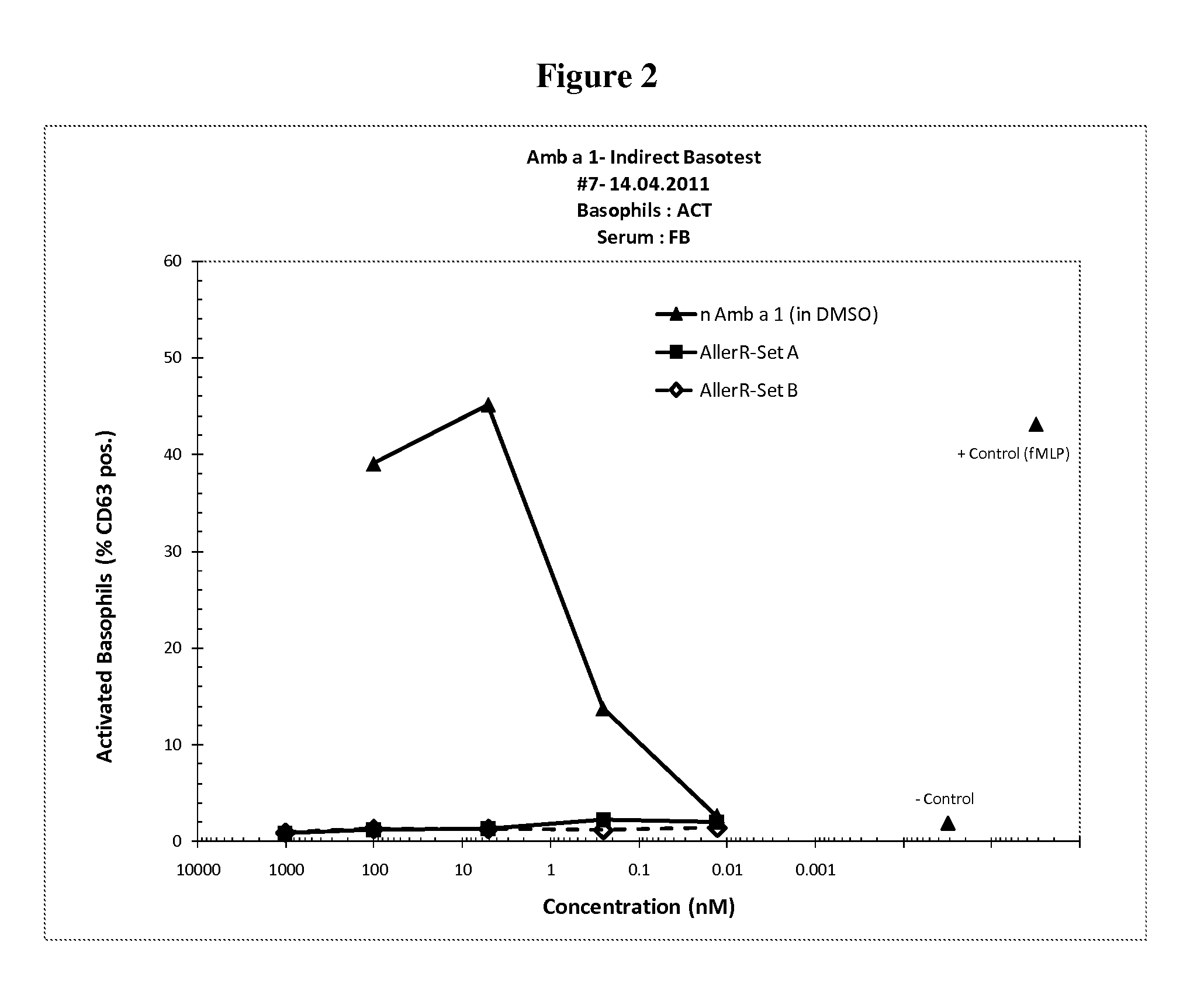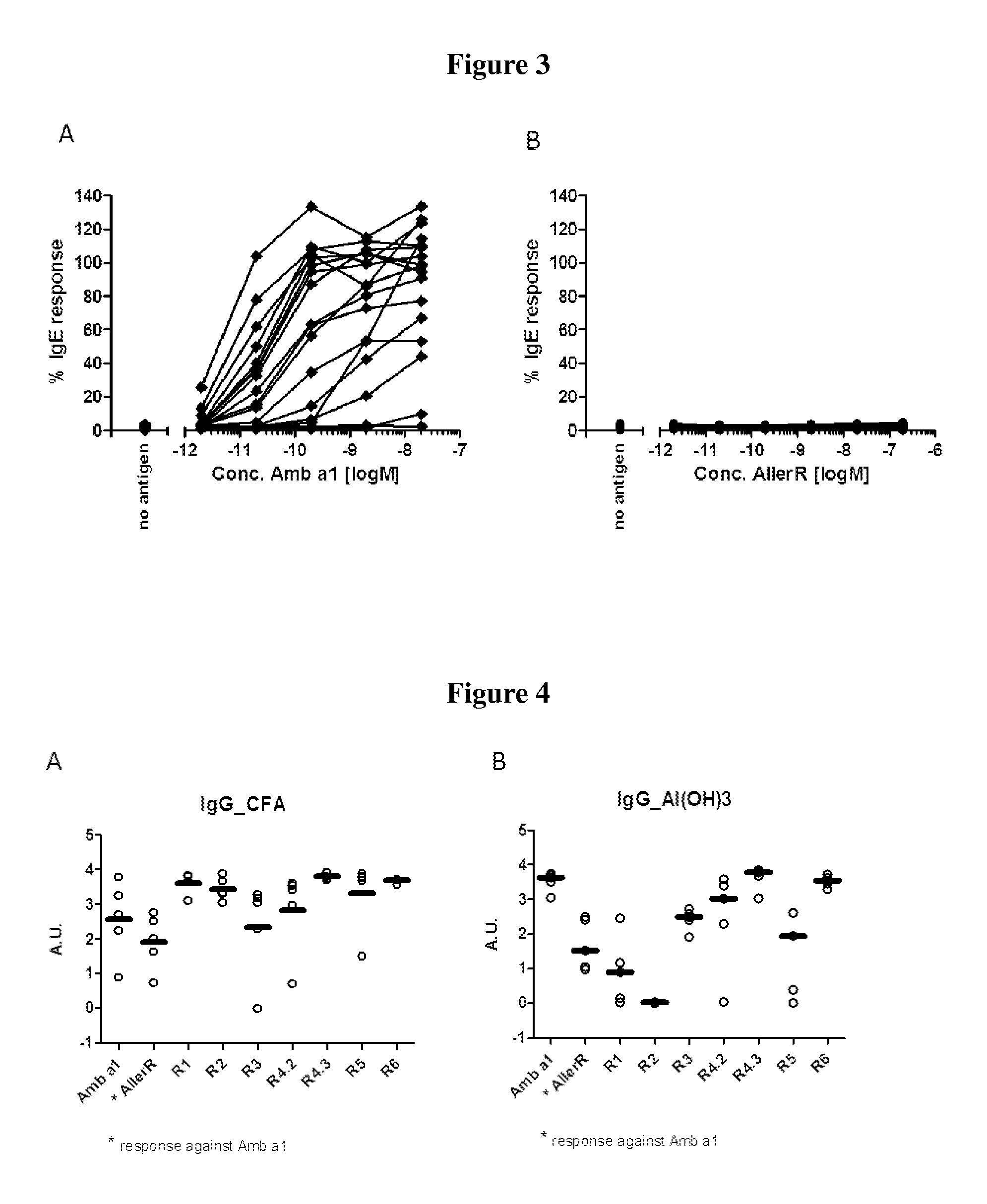Contiguous overlapping peptides for treatment of ragweed pollen allergy
- Summary
- Abstract
- Description
- Claims
- Application Information
AI Technical Summary
Benefits of technology
Problems solved by technology
Method used
Image
Examples
Embodiment Construction
[0037]The invention is described below by way of examples with reference to the following experimental procedures and results.
[0038]In order to select for products with lowered IgE binding, two sets of long (30-90 amino acids) contiguous overlapping peptides (COP) were devised encompassing the entire Amb a 1 allergen, thus providing all possible T cell epitopes. A first set (A) encompassed six peptides AllerR1, -R2, R3, -R4, -R5 and -R6, with reduced ability to form secondary structures as derived from analysis based on potential IgE epitopes and the tertiary structure of Amb a 1. A second set (Set B) of five COPs, AllerR7, -R8, -R9, -R10 and -R11, was selected. AllerR8 was readily soluble in water, AllerR10 was soluble in aqueous buffer at pH7 but AllerR7, 8, 9 and 11 were only soluble in DMSO but not in water. Due to these unforeseen solubility issues, SetA would be preferred for further development.
[0039]In Set A, the only peptide difficult to solubilize in water was AllerR4 (SEQ...
PUM
| Property | Measurement | Unit |
|---|---|---|
| Pharmaceutically acceptable | aaaaa | aaaaa |
| Reactivity | aaaaa | aaaaa |
Abstract
Description
Claims
Application Information
 Login to View More
Login to View More - R&D
- Intellectual Property
- Life Sciences
- Materials
- Tech Scout
- Unparalleled Data Quality
- Higher Quality Content
- 60% Fewer Hallucinations
Browse by: Latest US Patents, China's latest patents, Technical Efficacy Thesaurus, Application Domain, Technology Topic, Popular Technical Reports.
© 2025 PatSnap. All rights reserved.Legal|Privacy policy|Modern Slavery Act Transparency Statement|Sitemap|About US| Contact US: help@patsnap.com



